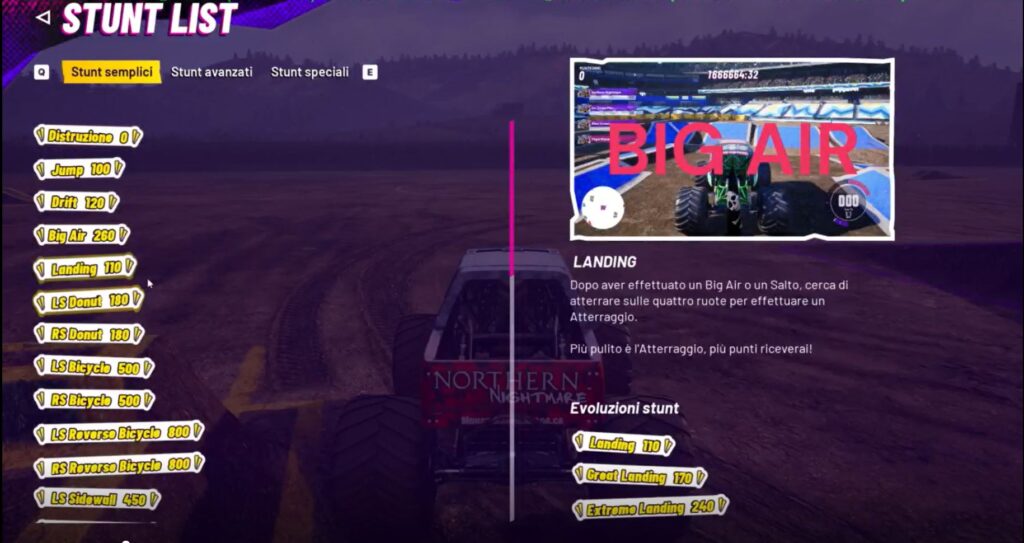Monster Jam Showdown is a highly anticipated release that brings the thrill of monster truck racing to gamers around the globe. This rip-roaring new game, created by the Italian company Milestone, takes a quintessentially American motorsport and supercharges it to appeal to fans of the real-world events as well as the broader gaming community.
This article delves into the intricacies of the localization process and features insights from project managers at Milestone and members of our team.
About the Game
Few franchises capture the raw energy of motorsports quite like Monster Jam. Known for its larger-than-life trucks and gravity-defying stunts, this franchise has become a household name among racing enthusiasts. Monster Jam Showdown, the latest addition to this beloved series, delivers an even more intense experience, combining the thrill of monster truck racing with Milestone’s renowned attention to detail and passion for the genre.
With a strong portfolio of racing titles under their belt, the studio was well-equipped to handle the technical demands of the game development process. When it came to the localization process, however, they decided to partner with experts who could navigate the fine balance between functionality and cultural sensitivity to ensure players from around the world could launch themselves into the game in their own language.
Laying the Course for Localization
The localization process began with the original Italian version, which was converted into English before being translated into other languages. This workflow leveraged a scalable strategy (using English as the base language), which reduced costs and improved efficiency but also required flexibility and clear communication throughout the different stages of development.
Incorporating localization early in the development process was crucial to the project’s success. The terminology associated with monster truck racing and the legacy terms incorporated from previous Milestone video games required careful consideration. Embedding localization into the game’s lifecycle from the alpha stage gave the localization team the chance to thoughtfully adapt cultural and linguistic elements to each target market. And the development of consistent and culturally relevant terminology laid the course for a smooth localization process.

The Localization Challenge: Terminology Management
Because terminology, like the names of trucks and stunts, is part of what makes this game so much fun, getting it right across languages was essential. But in the early stages of the game, terms were subject to change, so the localization team had to stay on its toes.

Daniela Bonis, a Localization Account Manager at Terra, recalled that “one of the challenges is maintaining consistent terminology, due to the several changes and updates made in the glossary during the localization process. To stay up to date with these linguistic decisions, we had to ensure all changes were accurately reflected in the localization tools.”

Nahuel Matos, a QA Manager in charge of the multilingual QA of the game, added further insight into this challenge: “We had to establish a process to keep up with the glossary changes as we worked on the projects. We suggested adding words as well, but managing these updates was complex. We initially used Excel formulas to update only the entries that changed, but we later refined this approach for better accuracy.”
In the end, “the localization testing process was quite demanding,” Bonis explained, “as it involved very specific terminology. Detailed feedback was provided for each language, ensuring that the research, reference materials and term usage were carefully considered.”
Strategies and Solutions
Use Tracking Tools
To manage the evolving glossary, the localization team implemented custom strategies, including using memoQ for glossary updates and Gridly for context management. These tools played a crucial role in maintaining consistency across translations and ensuring that the terminology was accurate and culturally appropriate.
Matos shared an example to illustrate the importance of using these tracking tools:
“In the game, there are what we call ‘stunts,’ which are the acrobatics performed by the trucks. Some official stunt names were left in English, while others could be translated or kept in English, depending on what was most suitable for the target language. This was difficult to track because each language took a different approach based on what was most appropriate.”
Good thing they had resources to refer to!

Anticipate Complications
To streamline the localization process as much as possible, the different linguistic teams tried to anticipate any potential complications that could come up with their languages.

Thomas Lornsen, a German linguist and LQA expert, gave an example: “One thing I can say is that concatenations can be tricky with languages like German, which is a very flexation-heavy language, i.e. lots of endings for case, gender, singular/plural, etc. So EN can just do something like ‘The {color} {vehicle}’, but German will have to get creative to accommodate all its pesky endings.”
Matos explained how, with those flexation-heavy languages, it was no easy task to decide how to translate some adjectives. For example, the adjectives “great” or “extreme” used in combination with stunt names presented a challenge in languages like Spanish, where gender needs to be considered. “In English, there is no gender marker, but in some languages, like Spanish, we had to choose an adjective without a gender marker (our selections were genial and excelente). To add complexity, the adjective appeared as a tag and was translated in a separate segment. Therefore, the tag in some languages was placed before and in others after the stunt and that also made things a bit complicated.”
Another challenging factor, according to Lornsen, is length: “German is infamous for long words and sentences, so it’s every UI’s nightmare.” His team ran into a brainteaser with the term “Mid-Air Control,” which allows players to steer their truck while it’s in the air. “‘Steuerung in der Luft’ (‘maneuvering while in the air’) would have been too long, but fortunately, German has a nifty thing called compound nouns, so we could go with ‘Luftsteuerung’ (‘Air Steering’) for ‘Mid-Air-Control’. It’s not perfect, but it does the trick.”
LQA and Feedback
The collaboration between the localization and development teams was seamless, with Milestone providing detailed feedback that allowed for further refinement of the localized content. By keeping the LQA process in-house, they ensured that the game’s compliance and validation were held to the highest standards.
“We performed LQA on certain sections,” Matos explained, “like the map regions and events. The linguists helped determine what was fine to leave in English and what was better to translate. For instance, the regions of the map of Alaska were left unchanged in Japanese, but for most other languages, they were translated.”

Post-Collab Huddle
When all was said and done, Irma De Carli, the localization manager at Milestone and Terra’s point of contact there, expressed her satisfaction with the partnership:

“Terra Localizations has been a great discovery! The team is easygoing yet highly professional. We connected with them effortlessly, and the adjustment period for familiarizing with our processes was very fast and smooth. During Monster Jam, we sometimes faced tight deadlines, but they were always met, even when things got hectic, without compromising quality.”
Another standout aspect of this project was Milestone’s decision to credit every member of the localization team. This acknowledgment in the game’s credits underscores the value of every contributor, from the developers to the linguists, and serves as a testament to the teamwork and dedication involved in the project.
The Takeaway
This localization was a complex, multi-faceted project that required careful planning, collaboration and adaptability. Looking back to the start of this shared journey, it’s clear that trust, communication and a commitment to quality were the cornerstones of this project’s success.



